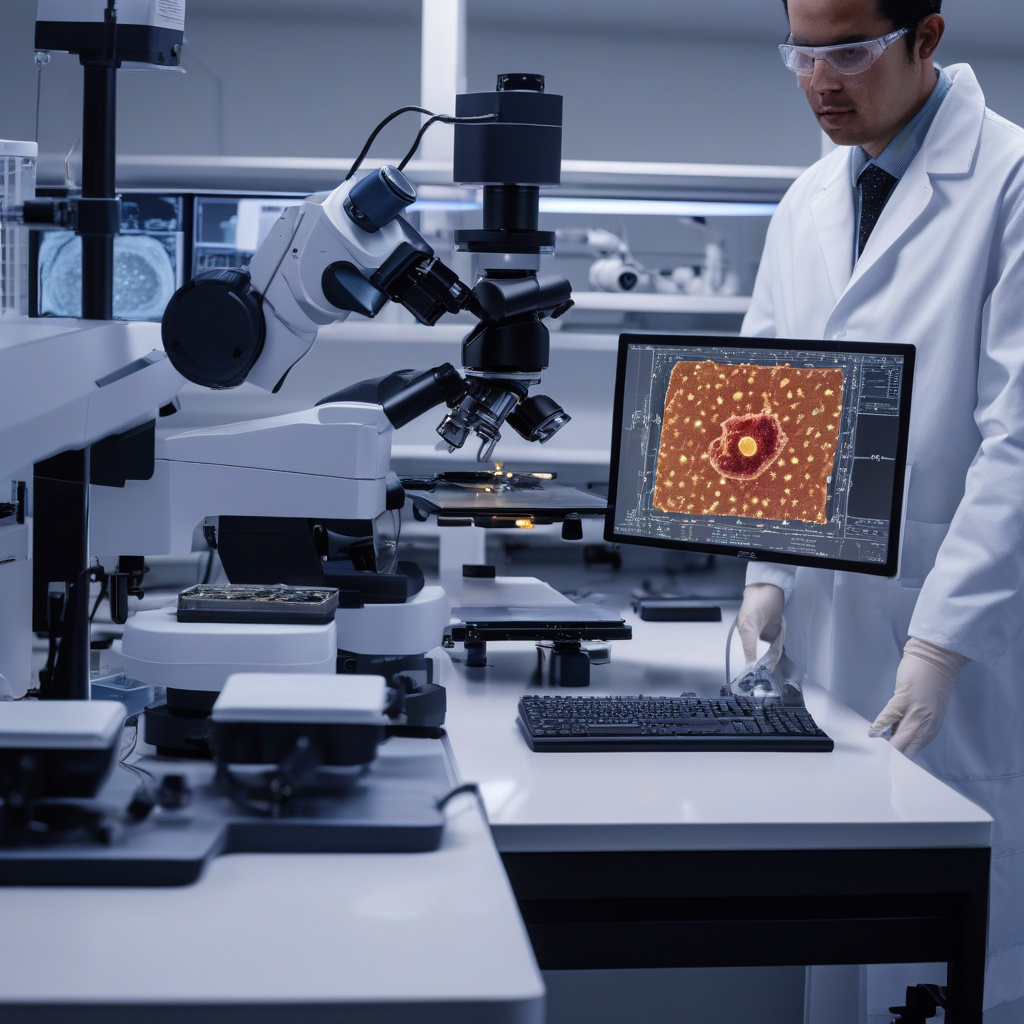AI and AFM Revolutionize Real-Time Macrophage Phenotyping
In the realm of precision medicine, the ability to accurately phenotype macrophages in real-time has long been a challenging endeavor. Macrophages, key players in the immune system, exhibit diverse phenotypes that can significantly impact disease progression and treatment outcomes. The traditional methods of macrophage phenotyping are often time-consuming, labor-intensive, and lack the required precision for comprehensive analysis. However, a recent study has shown that the combination of Artificial Intelligence (AI) and Atomic Force Microscopy (AFM) could be the groundbreaking solution to this longstanding issue.
The study, which merges AFM with deep learning algorithms, aims to map macrophage polarization states with unprecedented accuracy and efficiency. By leveraging the high-resolution imaging capabilities of AFM and the analytical power of AI, researchers can now differentiate between various macrophage phenotypes in real-time, offering new insights into their functional roles in health and disease.
AFM, a cutting-edge imaging technique that provides nanoscale resolution, allows researchers to visualize the structural characteristics of individual macrophages with remarkable detail. By scanning the surface of macrophages with a sharp probe, AFM generates topographical images that reveal their unique morphological features. This level of detail is crucial for distinguishing between different macrophage phenotypes, as subtle variations in cell shape and structure can indicate distinct functional states.
On the other hand, AI algorithms play a pivotal role in the analysis of AFM-generated data. By training deep learning models on a vast dataset of macrophage images, researchers can teach the AI to recognize patterns associated with specific polarization states. Once trained, the AI can rapidly process AFM images in real-time, accurately categorizing macrophages based on their phenotypic characteristics. This automated approach not only expedites the phenotyping process but also minimizes the potential for human error, ensuring reliable and consistent results.
The implications of this innovative approach to macrophage phenotyping are vast, particularly in the context of precision medicine. By gaining a deeper understanding of the diverse macrophage phenotypes present in different disease states, researchers can develop targeted therapies that modulate immune responses with unprecedented precision. For example, in cancer immunotherapy, identifying and targeting pro-tumor macrophage phenotypes while preserving anti-tumor phenotypes could significantly enhance treatment efficacy and patient outcomes.
Moreover, the real-time nature of AI-assisted AFM phenotyping opens up new possibilities for monitoring dynamic changes in macrophage phenotypes in response to various stimuli. This capability could revolutionize our understanding of immune responses in real-time, shedding light on the complex interplay between macrophages and other immune cells in different physiological and pathological conditions.
In conclusion, the combination of AI and AFM represents a significant advancement in the field of macrophage phenotyping, offering researchers a powerful tool for studying immune responses with unparalleled precision and efficiency. By harnessing the capabilities of these technologies, we are poised to unlock new insights into the role of macrophages in health and disease, paving the way for innovative approaches to precision medicine.
#AI, #AFM, #MacrophagePhenotyping, #PrecisionMedicine, #DeepLearning
